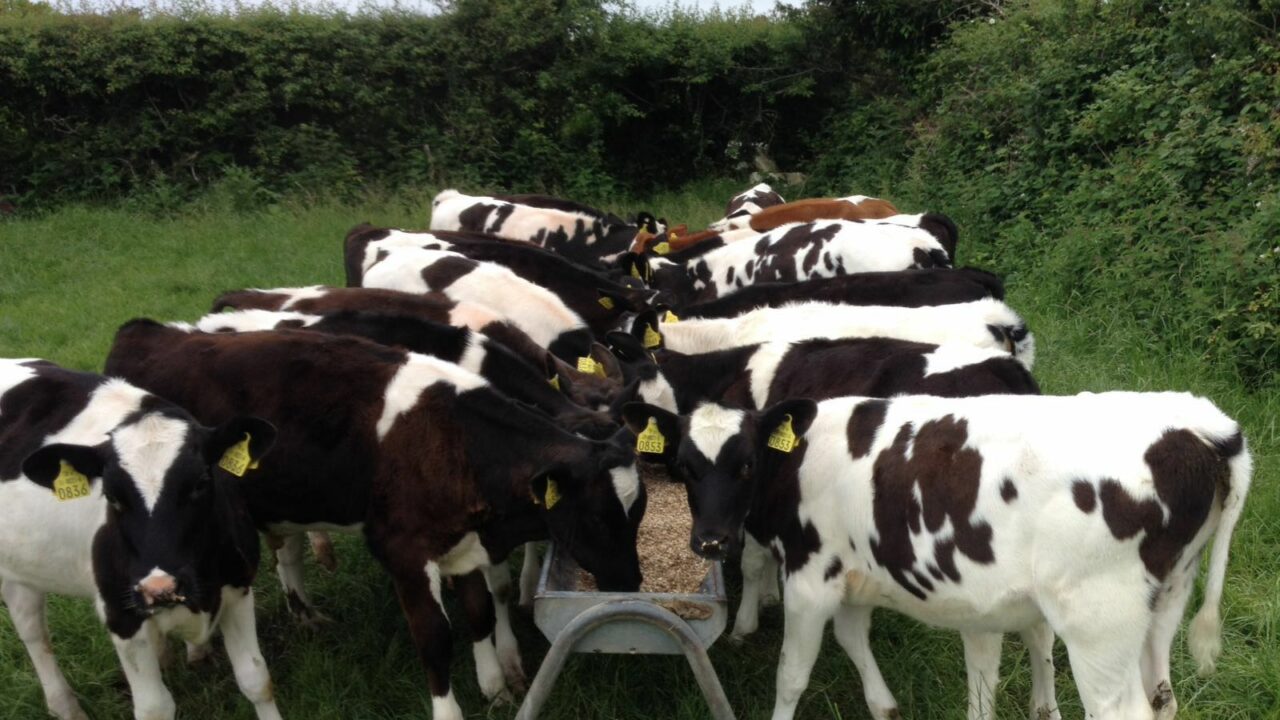Poor conception rates in replacement heifers are often due to heifers being underweight by the start of the breeding season.
The task of achieving this target pre-breeding weight begins once a replacement heifer is born, until mating start date (MSD) when she reaches approximately 13 to 15 months-of-age.
As the future replacement heifers approach the stage of weaning, we must ensure that an adequate weaning plan is in place – to minimise any stress placed on the calves – as they make the switch from whole milk or milk replacer to solid feed.
Managing replacement heifers from birth
Poor management of calves pre and post-weaning can result in poor potential growth rates, health issues and failure to reach heifer rearing weight targets.
Pre-weaning management:
- Calves should not be weaned until they are continually eating 1kg of concentrates per day;
- Weigh regularly to monitor weights: Holstein-Friesian calves should be at least 100kg at weaning and Jersey-cross calves should be at least 80-85kg at weaning;
- Underweight calves should be grouped together and continue being fed milk or milk replacer until target weights are achieved;
- When weaning, the volume of milk should be decreased gradually over the course of a few days.
Post-weaning management:
- Calves should be grazed in a leader-follower system of grazing ahead of older cows;
- They should be moved regularly to ensure they have continuous access to fresh grass;
- Concentrates should continue to be fed (1-2kg/calf) until grass intakes increase.
Furthermore, once the calves are weaned and at grass, it is important that a consistent worming programme is put in place.
Calf registrations
The week ending April 9, saw some 76,198 calves being registered, which is a decrease compared to last year’s figure for the same time period, when 103,349 calves were registered.
The latest figures from the Irish Cattle Breeding Federation (ICBF) show that there has been a 2.99% increase on last year’s figure – with 1,145,769 head of dairy calves born so far compared to 1,090,016 head for the same period in 2020.
In total some 1,430,374 calves have been registered so far this year, seeing an increase of 42,191 compared to the same period last year.

Weekly Breakdown
Taking a closer look at the figures, we can see that 50,088 dairy calves were registered during the week ending April 9, 2021 – a decrease of 12,144 head on the corresponding week in 2020.
Looking at suckler calf registrations in more detail, during the week ending April 9, 2021, some 26,110 beef calves were registered – a decrease of 15,007 head on the same week in 2020.
The total number of suckler calves registered so far this year stands at 284,605 head. During the same period in 2020, some 298,167 beef calves were registered.
When combined, total calf registrations – for both suckler and dairy – are still running ahead of last year’s levels.
During the week ending April, 2021, a tally amounting to 76,198 head of calves had been registered – a decrease of 27,151 head when compared to the same period in 2020.
Calf registrations up to and including the week ending April 9, 2021:
- Beef births: head (284,605);
- Dairy births: head (1,145,769);
- Total births: head (1,430,374).
